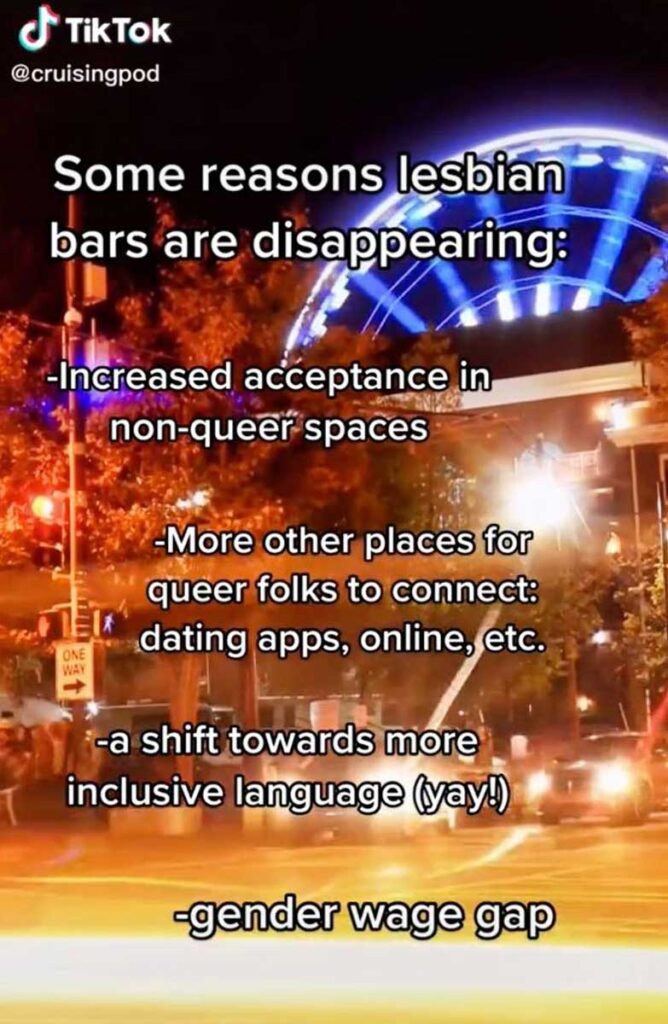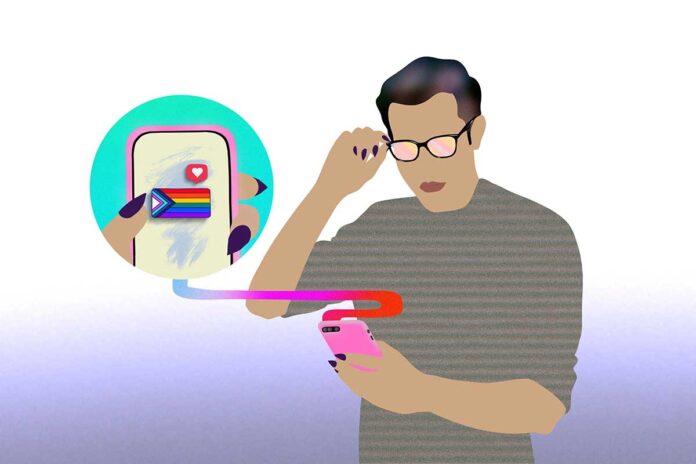In times when LGBTQ history is barely taught and discussions of the community are banned from many classrooms, free accessible resources become vital for LGBTQ+ young people. Many of those resources are available on social media platforms like TikTok, Facebook, Twitter, or Instagram. Yet, online spaces are also at risk of perpetuating phobias or spreading misinformation.
TikTok recently made news when they announced they would ban misgendering and deadnaming from their platform. The platform’s Community Guidelines which went into effect March 7 ask their users to not post, upload, stream, or share “content that targets transgender or non-binary individuals through misgendering or deadnaming.”
The guidelines also include a ban on hate speech based on protected attributes such as sex, gender, caste, or religion. However, they allow for the use of certain terms if they occur for educational purposes or are reclaimed within the specific community. Instagram, on the other hand, never clarifies “hate speech” in their community guidelines. However, they encourage users not to discriminate based on sex or gender. Yet, they ban photos of “female nipples,” unless shown while breastfeeding or “post-mastectomy, breast cancer awareness or gender confirmation surgery.”
The media watchdog organization GLAAD published a report in 2021 in which they analyzed the occurrences of hate speech on social media. Even though the least amount of hate speech was reported on TikTok and the most was reported on Facebook, GLAAD CEO Sarah Kate Ellis told Axios in 2021: “They are categorically unsafe, across the board.“
Despite GLAAD’s pronouncement, social media, when used carefully, is still a valuable way to get LGBTQ+ information, history, and news to those who need it most, as well as a way for community members to find one another. Here are a few accounts that showcase the diversity of the LGBTQ+ community through news, history, information, and more.
“Rainbow History Class” (@rainbowhistoryclass) is the go-to source for “the queer and trans history you don’t get in school.” Based in Australia, the account debunks myths such as the “gay” single earring, or “the 5 World Events Queer People Have Been Blamed For.” Did you, for example, know about the 1990 Bisexual Manifesto that was published in the magazine “Anything That Moves”? The Bay Area Bisexual Network wrote it to address the lack of progress that has been made in society for bisexual people as opposed to lesbians and gays.
“Openly” (@openlynews) is the account of Openly News, an initiative by the Thomas Reuters Foundation. The account covers global LGBTQ+ issues, compares LGBTQ+ rights, and has cultural and educational content. One recent post detailed the more than 60 transphobic bills proposed in the United States in 2022, including 19 bills aiming to restrict gender-affirming healthcare for minors. Many of the journalists for Openly also have their own social media accounts.
“It gets better” (@itgetsbetter) is the answer to “Don’t Say Gay.” The 2010 founded non-profit was a social media campaign to empower queer youth. Dan Savage and Terry Miller started the online campaign enraged by increased suicides among LGBTQ youth. Since then, the campaign has grown into an online movement with supporters such as the Obamas. Their TikTok account addresses a variety of topics, but it primarily focuses on the positive re-affirmation in LGBTQIA+ identities — specifically for youth — in parts of the country and world where such identities are being currently undermined. For example, the account tells how author Hans Christian Anderson was bi-romantic and wrote the story of The Little Mermaid as a love letter to a male friend who was married to a woman.

“Cruising” (@cruisingpod) is a podcast about the few remaining lesbian bars in our nation. It is hosted by Sarah Gabrielli, Rachel Karp, and Jennifer McGinity. The trailer states, “In the 1980s there were an estimated 200 lesbian bars open in the US. They existed out of necessity. With far less tolerance and understanding of queer people out in public, there was simply nowhere else to be gay. Today, there are roughly 20 lesbian bars left in the entire country.” This account is a road trip amongst friends for lesbian education purposes.
Charlie Amáyá Scott’s, Tik Tok and Instagram account, @dineasthetics, is about the history, herstory, present, and future of Native peoples. In one post, for example, they explain how the origins of the term Two-Spirit come from the Anishinaabe language, and how the term is not synonymous with being queer or trans. “Two-Spirit is meant to be an all-inclusive term unifying and describing various ‘gender’ and sexual’ identities unique to indigenous communities. Each indiginous community has a unique and complex understanding of ontology that may or may not be similar to understandings of “gender” and “sexuality” and that is okay.”
While GLAAD still deems most social media platforms “unsafe” for queer people, there are some queer diamonds to find out there. The accounts presented above are only a few of those that are made by queer people for queer people. In a small sample poll, PGN found that most Tik Tok users access content through their “For You” page, as opposed to Instagram users who chose their content mostly through following specific accounts. It is important to investigate all social media sources — especially those that report news, general information, and history — for accuracy.
